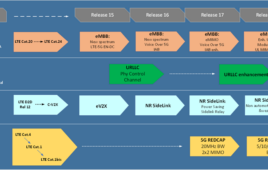While the mobile devices market appears to be in good shape overall, Gartner’s annual mobile report for 2009 reveals a shifting landscape and tight competition across the board.
The research firm found that worldwide mobile device sales to end users totaled 1.211 billion units in 2009, a 0.9 percent decline from 2008. However, in what could be a sign of better things to come, the fourth quarter of 2009 registered an 8.3 percent growth over the same quarter of 2008, with sales to end users surpassing 340 million units for the quarter.
While Nokia remained the king of the hill in annual mobile device sales to end users, capturing 36.4 percent of total market share, the Finnish OEM still saw a 2.2 percent drop from 2008. Although Nokia outperformed industry expectations in sales and revenue in the fourth quarter of 2009, its declining smartphone ASP showed that it continues to face challenges from other smartphone vendors.
“Nokia will face a tough first half of 2010 as improvement to Symbian and new products based on the Meego platform will not reach the market well before the second half of 2010. Its very strong mid-tier portfolio will help it hold market share, but its ongoing weakness at the high end of the portfolio will hurt its share of market value,” said Carolina Milanesi, research director at Gartner, in a statement.
Samsung came in second in overall device sales, at 19.5 percent of total market share, followed by LG and Sony Ericsson. Top smartphone sales to end users by platform, on the other hand, feature a whole new cast in the top five
Symbian took the top spot again, but saw a 5.5 percent drop in total sales to end users over 2008. According to Gartner’s results, the two best performers in smartphone OS providers was no real surprise, as Android and Apple show the largest growth. Android increased its market share by 3.5 percentage points in 2009, while Apple’s share grew by 6.2 percentage points from 2008, which helped it move to the No. 3 position and displace Microsoft Windows Mobile.
“In 2009, smartphone sales reached 172.4 million units, a 23.8 percent increase from 2008. In 2009, smartphone-focused vendors like Apple and Research In Motion (RIM) successfully captured market share from other larger device producers, controlling 14.4 and 19.9 percent of the worldwide smartphone market, respectively,” Milanesi said.
Considering its youth, Android still did well for itself and showed potential. “Android’s success experienced in the fourth quarter of 2009 should continue into 2010 as more manufacturers launch Android products, but some CSPs and manufacturers have expressed growing concern about Google’s intentions in the mobile market. If such concerns cause manufacturers to change their product strategies or CSPs to change which devices they stock, this might hinder Android’s growth in 2010,” said Roberta Cozza, principal research analyst at Gartner, in a statement.
Milanesi said that announcements made at Mobile World Congress last week foretell of a 2010 that will focus on operating systems, services and applications, with hardware taking a back seat. She projects that sales will return to low-double-digit growth, but competition will continue to put a strain on vendors’ margins.




